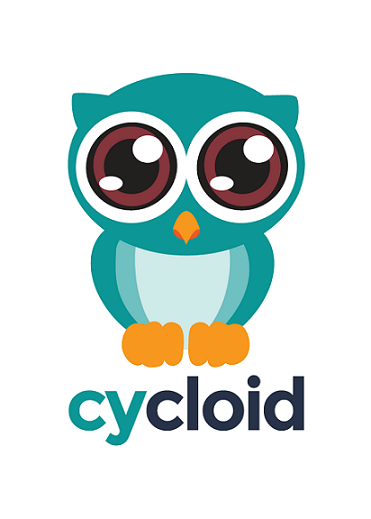Read your tfstate or HCL to generate a graph specific for each provider, showing only the resources that are most important/relevant.
We support certain providers. This allows us to better represent information that comes from these providers.
If your state file or HCL is from a provider we do not support, the resulting representation will simply be all resources present without any simplification or refinement.
We use Terraform: 0.12.28
| Provider | State | HCL |
|---|---|---|
| AWS | Yes | Yes |
| FlexibleEngine | Yes | Yes |
| OpenStack | Yes | Yes |
| Yes | Yes | |
| AzureRM | WIP | WIP |
To install the latest release of Inframap, you can pick one of this methods:
- pull the latest release from the Releases page
- pull the latest docker image from the Docker hub
- use your Linux package manager (only AUR at the moment)
You can build and install with the latest sources, you will enjoy the new features and bug fixes. It uses Go Modules (1.13+)
$ git clone https://github.com/cycloidio/inframap
$ cd inframap
$ go mod download
$ make buildThe inframap --help will show you the basics.
The most important subcommands are:
generate: generates the graph from STDIN or file.prune: removes all unnecessary information from the state or HCL (not supported yet) so it can be shared without any security concerns
Visualizing with dot
$ inframap generate --tfstate state.tfstate | dot -Tpng > graph.pngor from the terminal itself
$ inframap generate --tfstate state.tfstate | graph-easyor from HCL
$ inframap generate --hcl config.tf | graph-easyor HCL module
$ inframap generate --hcl ./my-module/ | graph-easyusing docker image (assuming that your Terraform files are in the working directory)
$ docker run --rm -v ${PWD}:/opt cycloid/inframap generate --tfstate /opt/terraform.tfstateTerraform Graph outputs a dependency graph of all the resources on the tfstate/HCL. We try to go one step further, by trying to make it human-readable.
If the provider is not supported, the output will be closer to the Terraform Graph version (without displaying provider / variable nodes)
Taking https://github.com/cycloid-community-catalog/stack-magento/ as a reference this is the difference in output:
With terraform graph:
With inframap generate --hcl ./terraform/module-magento/ | dot -Tpng > inframap.png:
With inframap generate --hcl --connections=false ./terraform/module-magento/ | dot -Tpng > inframapconnections.png:
With inframap generate --hcl ./terraform/module-magento/ --raw | dot -Tpng > inframapraw.png:
For each provider, we support specific types of connections; we have a static list of resources that can be nodes or edges. Once we identify the edges, we try to create one unique edge from the resources they connect.
For a state file, we rely on the depends_on key and, for HCL we rely on interpolation to create the base graph one which we then
apply specific provider logic if supported. If not supported, then basic graph is returned.
Note: We are currently investigating/trying to implement the grouping (#6) and connections based on iam resources (#11).
aws_security_groupaws_security_group_rule
flexibleengine_compute_interface_attach_v2flexibleengine_networking_port_v2flexibleengine_networking_secgroup_rule_v2flexibleengine_networking_secgroup_v2flexibleengine_lb_listener_v2flexibleengine_lb_pool_v2flexibleengine_lb_member_v2
openstack_compute_interface_attach_v2openstack_networking_port_v2openstack_networking_secgroup_rule_v2openstack_networking_secgroup_v2openstack_lb_listener_v2openstack_lb_pool_v2openstack_lb_member_v2
If a graph is returned empty, it means that we support one of the providers you are using on your HCL/TFState but we do not recognize any connection or relevant node.
To show the configuration without any InfraMap applied logic you can use the --raw flag logic and print everything that we read.
If it works, it would be good to try to know why it was empty before so we can take a look
at it as it could potentially be an issue on InfraMap (open an issue if you want us to take a look).
By default unconnected nodes are removed, you can use --clean=false to prevent that.
Please see the MIT LICENSE file.
All notable changes to this project will be documented in this file.
The format is based on Keep a Changelog, and this project adheres to Semantic Versioning.
Cycloid is a European fully-remote company, building a product to simplify, accelerate and optimize your DevOps and Cloud adoption.
We built Cycloid, your DevOps framework to encourage Developers and Ops to work together with the respect of best practices. We want to provide a tool that eliminates the silo effect in a company and allows to share the same level of informations within all professions.
Cycloid supports you to factorize your application in a reproducible way, to deploy a new environment in one click. This is what we call a stack.
A stack is composed of 3 pillars:
Thanks to the flexible pipeline, all the steps and technologies are configurable.
To make it easier to create a stack, we build an Infrastructure designer named StackCraft that allows you to drag & drop Terraform resources and generate your Terraform files for you.
InfraMap is a brick that will help us to visualize running infrastructures.
The product comes also with an Open Source service catalog (all our public stacks are on Github) to deploy applications seamlessly. To manage the whole life cycle of an application, it also integrates the diagram of the infrastructure and the application, a cost management control to centralize Cloud billing, the monitoring, logs and events centralized with Prometheus, Grafana, ELK.



